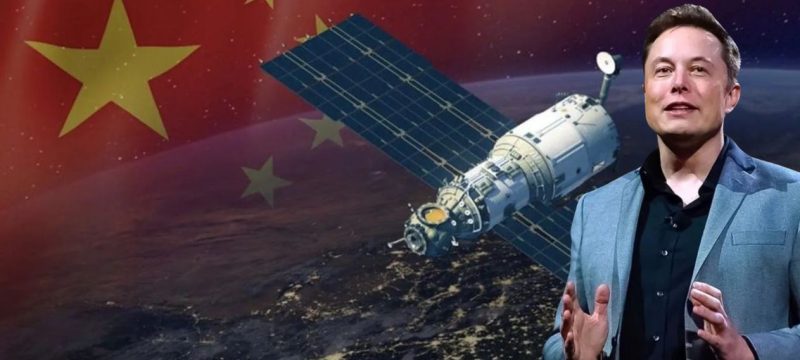The satellite internet industry is becoming increasingly competitive, posing challenges to Elon Musk’s Starlink, which has dominated the high-speed satellite broadband market. Emerging rivals include a Chinese state-backed venture and another service funded by Amazon founder Jeff Bezos.
Shanghai-based SpaceSail is aggressively expanding its global reach. In November, it signed an agreement to operate in Brazil and initiated discussions with over 30 countries. By January, it had begun operations in Kazakhstan, as confirmed by the Kazakh embassy in Beijing. Meanwhile, Brazil is also in negotiations with Bezos’s Project Kuiper and Canada’s Telesat, marking new competition for Starlink.
Read more: Starlink’s New Feature Allows iPhones to Send Texts via Satellites
Since 2020, Starlink has launched more low-Earth orbit (LEO) satellites than all its competitors combined, operating at altitudes below 2,000 km to efficiently deliver high-speed internet, particularly to remote areas, maritime operations, and military forces. However, Beijing views Starlink’s dominance as a strategic challenge, investing heavily in alternative networks while advancing military research on tracking satellite constellations.
In 2023, China launched a record 263 LEO satellites, based on data from astrophysicist Jonathan McDowell and tech consultancy Analysys Mason. Beijing’s investment in the satellite race is supported by Chinese corporate filings and academic studies that highlight its efforts to develop advanced tracking technologies for satellite networks.
Brazil, which has had past disputes with Musk over commerce and political matters, has welcomed these new competitors as it seeks to expand high-speed internet to remote areas. SpaceSail, controlled by the Shanghai municipal government, has declined to comment on its expansion plans. However, Chinese state-controlled media has described the company as a major player in satellite communications with the potential to provide seamless global coverage.
China’s Expanding Satellite Networks and Growing Competition
Unlike most of Starlink’s competitors, SpaceSail has ambitious plans. It aims to launch 648 satellites this year and 15,000 by 2030, while Starlink currently operates about 7,000 satellites, with a target of 42,000 by the end of the decade. SpaceSail’s network will be part of Qianfan, or the “Thousand Sails” constellation—China’s first major international push into satellite broadband. Beijing is also working on three other satellite constellations, planning to launch 43,000 LEO satellites in the coming years and investing in multi-satellite launch vehicles.
According to Chaitanya Giri, a space technology expert at India’s Observer Research Foundation, the main objective is to secure as many orbital slots as possible. However, China’s rapid satellite expansion has raised concerns among Western policymakers, who fear it could expand Beijing’s influence in digital communications and reinforce its internet censorship regime. The American Foreign Policy Council has suggested that the U.S. should enhance cooperation with developing nations to counter China’s growing control over digital infrastructure.
Additionally, researchers describe Qianfan as a crucial part of China’s Belt and Road Initiative (BRI)—a $1 trillion global infrastructure project that has been criticized for primarily serving Beijing’s geopolitical ambitions. While China’s commerce ministry and telecoms regulator have not responded to media inquiries, its foreign ministry insists that its space projects are meant for international cooperation and the benefit of all nations.
SpaceSail has positioned itself as a provider of reliable internet access, particularly for disaster recovery efforts and remote areas.
China’s Satellite Industry Gains State-Backed Momentum
Starlink’s role in the Ukraine war has drawn attention from China’s military researchers, leading to significant state investments in alternative satellite networks. Hongqing Technology, a Chinese firm developing a 10,000-satellite constellation, secured 340 million yuan ($47 million) from government-linked investors in February 2024. Meanwhile, SpaceSail raised 6.7 billion yuan ($930 million) in a state-backed financing round last year.
China has also intensified its research efforts. In 2023, the country published 2,449 patents related to LEO satellite technology—up from just 162 in 2019—highlighting its push to close the technological gap with competitors. These patents focus on cost-efficient networks and low-latency communication systems, essential for next-generation satellite internet.
Some of this research appears to be specifically targeting Starlink, with Chinese military-linked patent applications describing it as a key asset for U.S. reconnaissance and military communication. According to a January 2024 study published by two People’s Liberation Army (PLA)-affiliated institutes, Beijing is developing new tracking algorithms for large satellite constellations, inspired by how humpback whales create spirals to trap prey.
The Wild West of Space
The growing commercialization and militarization of space have created an environment of uncertain regulations, where companies and governments are racing to secure key orbital positions before new policies are enforced.
Antoine Grenier, global head of space at Analysys Mason, describes this competition as the “wild west,” where major players are using their current advantage to shape the future of satellite communications. As China continues to invest in satellite dominance, the battle for control over the next era of global internet infrastructure is only intensifying.









